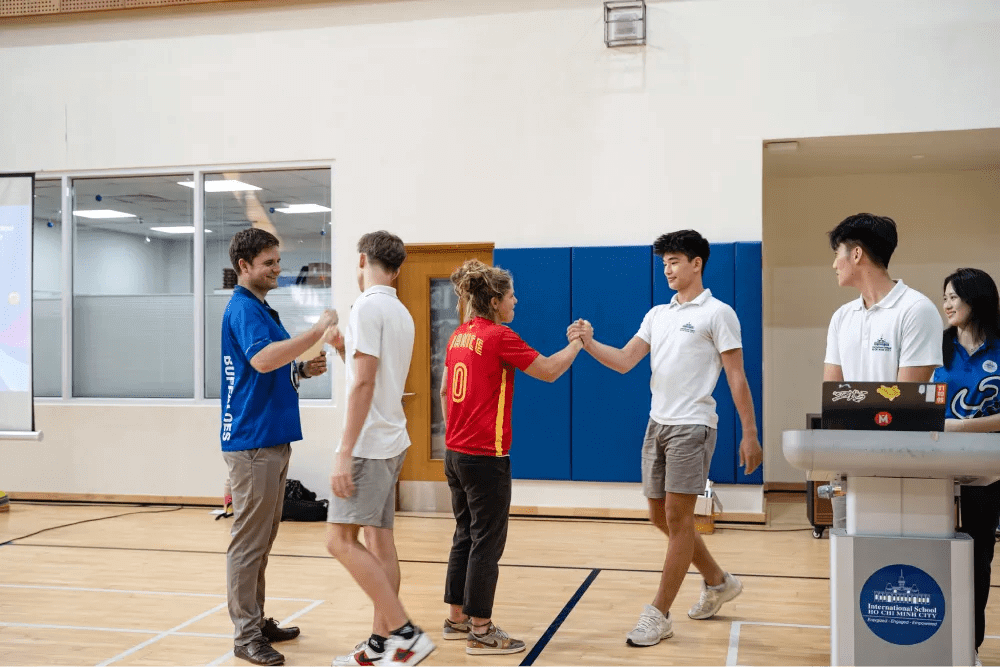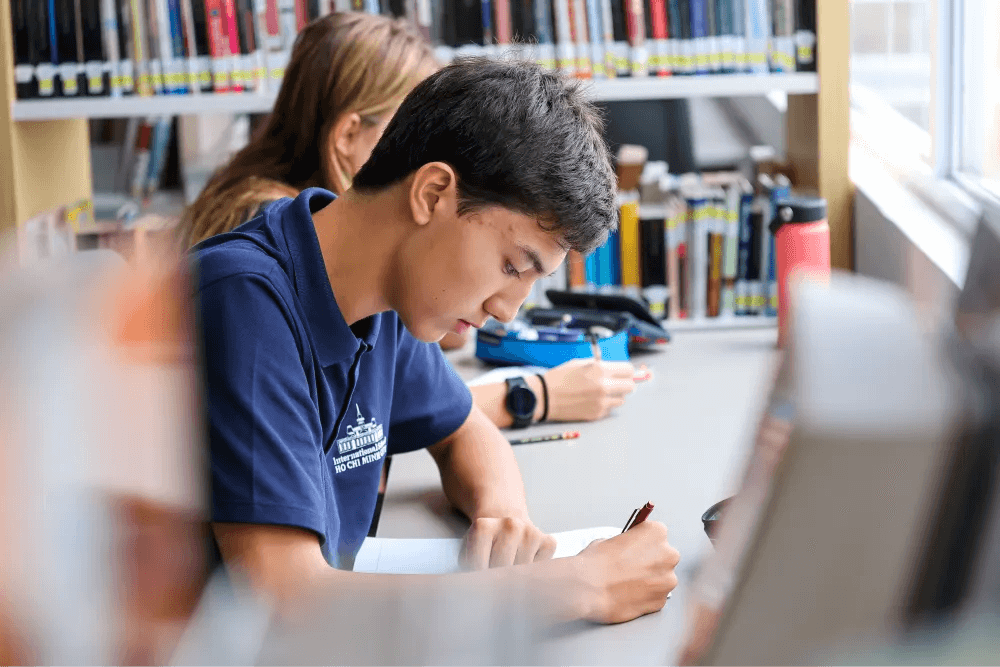Advice for High School Students: 11 Valuable Tips
High school students often grapple with stress, test anxiety, heavy homework loads, and complex peer relationships. Without proper support and guidance, these challenges can lead to academic burnout, adversely affecting their well-being and academic performance. This article offers 11 valuable pieces of advice for high school students, designed to help them maintain a healthy lifestyle and thrive in all aspects of their educational journey.
1. Be Yourself
Being oneself is crucial for high school students because it cultivates confidence and self-esteem. Those comfortable in their own world are more likely to pursue their goals and handle unexpected challenges.
Many high school students suppress their true talents and uniqueness to conform to societal norms and peer expectations. During their high school years, they experience a critical moment when they realize authenticity is essential.
Teenagers sometimes prioritize pleasing others over expressing their true selves. Despite fears of rejection and failure, they should set the stage for discovering their identity and potential, paving the way for genuine connections and future success.
2. Improve Mental Health
Mental health management helps high schoolers cope with the pressure of school, reduces stress, and enhances productivity. Hence, advice for high school students often emphasizes mental health improvement. Here are some strategies to improve mental well-being:
- Establish a consistent sleep schedule: Consistent bedtimes help regulate the brain’s release of sleep and wake-up chemicals to improve sleep quality.
- Reduce screen time: Excessive screen time can disrupt sleep patterns and cause eye strain. To fall asleep faster and achieve deeper sleep, it is best to turn off electronic devices at least 30 minutes before bed.
- Do more exercise: Exercise may be the most crucial way to maintain mental health in high school. It can take various forms beyond traditional sports, such as dancing, swimming, and biking. High schoolers should aim for one hour of physical activity every day.
- Make a list for the next day: If students lie in bed worrying about the next day, mentally set the concern aside and trust that they will address it when it arises. Experts suggest a to-do list helps the brain alleviate anxiety related to upcoming events.
- Change up the perspective: School life becomes monotonous as a result of repetitive activities, leading to a loss of perspective. High school student can alleviate this issue by changing their routine. For example, spending time in nature will refresh their outlook and offer a mental escape.

3. Explore Extracurricular Activities
The benefits of extracurricular activities for high school students involve fostering academic performance, social opportunities, better mental health, and other essential life skills. Such activities cover a diverse range of interests and pursuits, including the following:
- Athletics: Participation in athletics, such as team sports and individual competitions, promotes physical fitness, teamwork, and discipline. High schoolers can even have a chance to discover their hidden potential that may affect their future career.
- Volunteer work: Volunteer activities allow students to contribute to their communities. They can also build networks and make a meaningful impact by developing a sense of social responsibility.
- Arts: Fine, performing, and creative arts encourage high school students to explore their artistic talents and develop confidence. They can also communicate with one another and explore new perspectives on the big wide world.
- Academic ECAs: Those who focus on intellectual growth and academic achievement prefer academic extracurricular activities like debate, Model UN, mathletes, and science clubs.
- Digital creativity: Web-based initiatives, digital design, animation, and blogging help students develop digital literacy, technical skills, and writing proficiency. Students have a platform to share ideas and connect with more people worldwide.
4. Embrace The Power of Networking
High school students need to build connections and relationships so they can receive emotional support and advice for their future careers. There are several activities that high schoolers can engage in to expand their networks:
- Attend campus events: Events like club meetings and competitions expose students to social opportunities and enrich their high school experience. Moreover, they can find peers who share similar interests.
- Volunteer for events: Volunteering provides precious chances for high schoolers to meet new people while contributing to the community.
- Talk to people: Networking starts with conversations. High school students can show interest in others, listen to their hobbies, and engage in deeper discussions.
- Find a mentor: Mentors offer invaluable insights into educational pursuits and career paths. Their personalized advice for high school students helps students overcome challenges.
- Expand social circle: Students can increase their chances of making new friends by actively expanding their social networks. A larger social circle opens doors to expanding the community’s influence and professional development.

5. Nurture Regular Study Habits
Regular study habits help high school students develop academic and personal performance. Some study habits students should cultivate are:
- Establish specific goals: Successful high school students employ SMART (Specific, Measurable, Achievable, Relevant, Time-bound) goals to guide their study sessions. For example, instead of “study Math,” the goal should be “complete chapters 3 and 4, and score at least 80% on a practice test by Friday.”
- Use active learning methods: Active learning techniques encourage engagement with study material by allowing one to summarize in one’s own words, teach others, and apply knowledge to real-life situations.
- Apply Pomodoro technique: This time management strategy enhances focus and prevents burnout by adding short breaks to long study periods to maintain high concentration levels.
- Set up a dedicated study space: A dedicated, quiet, clean, and distraction-free study space ensures a mental association with productivity, improving overall study efficiency.
- Study groups: Students can join or form study groups for challenging assignments. By expressing diverse perspectives and clarifying doubts with each other, they can ultimately improve their learning outcomes.
6. Learn Time Management Skills
Many high school students struggle to balance academic responsibilities with extracurricular activities and personal life. Hence, they need effective time management methods to reduce stress and meet deadlines. The following skills will free students up more time for productivity tasks:
- Identify productive time: High school students can be morning or night people. Thus, they should align their study schedule with peak productivity hours and adjust tasks to coincide with their optimal performance periods.
- Budget the time: Calculate how much time is spent on activities, then develop a structured weekly timetable. Ensure that relaxation intervals are included within the schedule to maintain balance.
- Set up a dedicated study time: Allocate dedicated study time when students stay away from all distractions, including phone use. Only respond to calls and texts until tasks are complete to ensure their ultimate focus.
- Always bring the textbook: Students can use textbooks for task noting to avoid missing important ones. A handy textbook allows students to maximize their productivity and manage their study schedule.
- Avoid getting sidetracked: If teachers or parents notice students allocating their time inefficiently, ask them to review their tasks and refocus on top priorities.

7. Set Goals
Goals are clear directions that help young people stay focused on achieving specific outcomes. When identifying a goal to strive forward, students can learn how to implement and modify a detailed study plan to get the desired results. Planning early steps to achieve the following short-term goals is an essential piece of advice for high school students to succeed academically:
- Take on a leadership role: If a student government position seems too overwhelming, high schoolers can start with leadership roles. Smaller steps can provide valuable experience for higher positions.
- Improve public speaking skills: Public speaking enhances communication proficiency and promotes critical thinking through structured arguments. High schoolers can refine these skills through classroom discussions and school debates.
- Research scholarship opportunities: Awareness of scholarships secures financial support post-high school. Students can consult with a guidance counsellor and research local organizations to seek funding for their higher education.
- Grow your savings account: High school is an appropriate time for students to determine their desired savings amount and set short-term financial goals to build towards longer-term objectives.
- Achieve good academic results: Many high school students prioritize achieving good academic results. To ensure their stable academic performance, they can implement strategies like regular teacher check-ins, attending after-school sessions, and participating in study groups.
8. Take a Language Class
Learning a new language in high school helps fulfill graduation requirements, open doors to explore foreign countries, and develop cognitive skills. High school students can choose a foreign language to study based on two factors:
- Based on your career goals: Students can consider languages spoken in countries relevant to their career aspirations. For example, if they are interested in international business, languages like English and Chinese will be beneficial.
- Based on interests: Learning a language that aligns with cultures and regions students are passionate about will deepen their understanding of those cultures and build practical communication skills in international settings.
9. Explore Potential Career Paths
High school students should start exploring potential career paths to make informed decisions about future education.
- Step 1: Identify priorities: Young learners can start by considering their values and skills. They should also weigh factors like salary, societal impact, skill development, and business ownership potential.
- Step 2: Study career options: This step involves thoroughly researching potential career options to determine their suitability. The chosen career should best match the student’s interests, skills, and long-term aspirations.
- Step 3: Set goals: In this step, students commit to take actionable steps and set achievable goals for their journey.
- Step 4: Review the plan: Career exploration is an ongoing process that spans a lifetime. Regular evaluation ensures alignment between current interests and values with the set goals.

10. Take Advantage of School Resources
High school students can maximize their academic success by taking advantage of school resources, such as:
- Personnel: Schools provide reading specialists, peer coaches, and paraprofessionals who give specialized support and guidance tailored to student needs.
- Materials: Access to evidence-based curriculum, software, and culturally relevant materials enhances learning experiences.
- Funding: Schools receive federal funding, state funding, fundraisers, and grants to enrich learning environments.
- Time: High school students can allocate time for coaching, mentoring, and instructional planning, optimizing studying effectiveness and their outcomes.
- Facilities: Classrooms, computer labs, and equipped facilities accommodate technological requirements.
- Equipment: Students can engage in an interactive learning experience as they gain access to a wide range of equipment, such as audio/video devices, lab resources, and computers.
- Technical assistance: Schools offer support for solving computer and technology issues to ensure seamless classroom operations.
- Training: Coaching, college courses, workshops, and conferences strengthen teacher skills to maintain instructional quality.
11. Learn New Skills Everyday
Learning new skills in high school prepares students for university as it enriches their personal development, making them well-equipped to meet the challenges of higher education. The best skills for high schoolers include:
- Copywriting: Copywriting is essential for students pursuing careers in journalism, marketing, and public relations. This skill enhances their ability to craft engaging written content.
- Digital marketing: Studying digital marketing introduces students to strategies for social media management, SEO, and advertising. They can navigate the competitive digital landscape and establish a solid online presence for their future business.
- Writing: Proficient writing skills help students achieve success in higher education. Furthermore, since various professions require written communication, high school students should hone their writing skills in order to excel in their future jobs.
- Videography: Learning videography involves sharpening storytelling and visual communication skills. High school students can practice critical thinking, problem-solving, and collaboration, which are important competencies for their success in academic and professional pursuits.
- Graphic design: In a technologically driven world, high school students should study graphic design to master digital tools and software. As technology continues to evolve, proficiency in these skills prepares them for various industries.
- Computer programming: Programming skills are the foundation for understanding how software and digital systems operate. With deep knowledge in various programming languages, students have a promising career in technology-driven fields.
- Fashion design: Fashion design allows high school students to explore creativity and express individuality, fostering their artistic side. As fashion influences culture and identity, learners can contribute to innovations in the industry.

Get The Best Advice for High School Students with ISHCMC
At ISHCMC, giving the best advice for high school students is the core of our student support services. Our counselors, guided by Individualized Learning Plans (IEPs), provide personalized guidance to help students overcome challenges and thrive academically and professionally.
ISHCMC supports high school students’ future growth by counseling them on the best-fit university option with generous scholarships. Moreover, the English Language Acquisition (EAL) program offers support until students achieve proficiency, ensuring they transition smoothly into other language courses.
Contact ISHCMC for a consultation about the program and discover how we can support your children’s goals!






